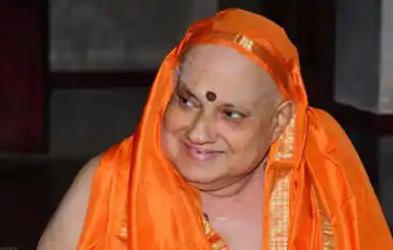KESAVANANDA BHARATI
Kesavananda Bharati Swamiji, on whose petition the Supreme Court of India delivered the landmark judgement highlighting the basic structure of the Constitution, passed away on 6 September 2020 at the Edaneer Mutt, Kasargod, Kerala.
The case in which Kesavananda Bharathi challenged Kerala Land Reforms laws five decades ago set the Basic Structure Doctrine which limited Parliament’s power to amend the Constitution. The historical landmark judgement in this case upholds the power of the Supreme Court to judicially review the laws passed or amended by the Parliament. It also established the important concept of Separation of Powers – legislative, executive and the judiciary in the constitutional history of India.
Kesavananda Bharati versus the State of Kerala is unique in the constitutional history of our country.
The case was heard by a Bench of 13 judges, the largest formed bench in the history of Supreme Court and was heard over 68 working days from October 1972 to March 1973.
The 29th Amendment was passed by Parliament to include the Kerala Land Reforms Amendment Act, 1971 in the Ninth Schedule to the Constitution and the seer of the Edaneer Mutt, Kesavanada Bharati moved the Supreme Court challenging the amendment of the Constitution.
The Supreme Court held that 29th Amendment was valid and he did not win any relief in the case.
But in this historic Fundamental Right Case, the Supreme Court held that though Parliament has the power to amend under Article 368 of the Constitution, it did not have the power to amend the very basic features of the Constitution, thereby preventing the nation from slipping into a totalitarian regime.
The judgement proved very timely in protecting the democracy and freedom of the people in those days.
But later, India had to witness the most draconian days during the Emergency declared on 25 June 1975.


